On Thursday, the first day of the SDA Conference, we took a bus tour around the city to see most of the SDA sponsored shows. There were six stops on the tour including solo shows by eight artists and three group shows. There were also three shows at the Southwest College of the Arts which I saw a couple days later. Although it wasn’t the total fiber show immersion that I saw at Fiber Philadelphia, there was a lot of really interesting work and some real stand outs for me.
One of these was Janet Lasher’s sculptural work in paper at Parchman Stremmel Gallery. These simple forms standing in their rigid grid had a quiet power. Janet explained how she made the forms by shaping reed and paper over molds which she then cut apart to remove and stitched them up the back like a corset. She pointed out how, although they are all made on the same mold, each figure has subtle differences. Her use of scale, color, and multiples was very effective, bringing to mind issues of gender stereotyping and the commodification of women.
I loved Elise Deringer’s work at AnArte Gallery. She had several pieces from Residues, “A series of dye-based drawings investigating intentionality, chance, & the gesture.” These were made up of two layers of silk organza, dyed and sewn together like a large pocket, containing residues of sand, their marks accentuated by lines of stitch. Her other work at the gallery included large-scale painterly textile constructions embellished with salt. These were luminous and could hold their own in any exhibition of contemporary painting.
Gallery Nord had an exhibition by Nathalie Miebach, Changing Waters. Miebach interprets weather data in three-dimensional form through basketry. I have seen images of her work over the past few years but very much enjoyed seeing her work in person. Her work, with its bright colors and fantastic shapes, evokes the excitement and disorientation of amusement park rides while translating very real, and sometimes devastating, atmospheric conditions. She gave the closing talk of the conference and was a compelling and inspiring speaker. She explained how she came to this work and the way that the data she works with informs and shapes her sculptural basketry. I would love to have had a chance to see this work again after hearing her talk.
One of the group shows on the tour was Earth Friendly Alchemy: Explorations in Natural Dyeing. This show developed from a collaboration between nine artists, all experts in their fields, who explored using natural dyes while sharing their collective knowledge. The resultant show, with works by Catharine Ellis, Sara Goodman, Lisa Grey, Ana Lisa Hedstrom, Joan Morris, Elin Noble, Jay Rich, Valerie d. Walker, and Bhakti Ziek, is a document of a moment in time. Currently, there is a huge interest in natural dyeing, inspired by makers and teachers like India Flint, and responding to the “green” consciousness of the times. This exhibition was timely and appropriate as part of the conference.
The SDA Students’ Show at the Durango Building on the UTSA Campus was large, lively, and strong. Themes and materials were interpreted with skill and maturity. I was surprised and delighted to see a piece by one of my students from my workshop in Philadelphia, Katherine Hobbs. I might not have recognized her name in a room packed full of art, but I certainly recognized her face!
Say Si Gallery had the SDA Member’s Show (which I’ll cover in another post) and also a small collection of works by Portia Roy, an emerging artist from Portland, Oregon. These small works were deliciously disturbing, pustules of silken tapestry bursting through a skin of stitched and sculpted cotton batting. The artist says, “Through construction and material, this work continues an ongoing exploration of the tension between allure and repulsion, ease and discomfort.” They were very effective, beautiful and horrible at the same time.
Another show I enjoyed was work by Kenyan artist, Naomi Wanjiku Gakunga, at the Southwest School of Art. Her works in recycled metals and crocheted wire reference the quilt in their patchworked construction. Surface design in the patterns and textures created by rust contrast with the shine of stainless steel. Traditional fiber techniques of basketry, weaving, stitch and crochet are translated through use of non-traditional materials. They speak of Gakunga’s Kenyan heritage with a contemporary voice.
This post is merely a short tour of what spoke to me on that particular day, and not a judgement by omission of the fine work that was presented by many artists. I find that through looking at art, and by paying attention to what appeals to me, I can find a way in to issues that I am currently looking at in my own work. On this particular day, simplicity is what I kept seeing. Learning and research are always personal. In an overwhelming abundance of visual stimulation, we can find a message to ourselves if we pay attention.
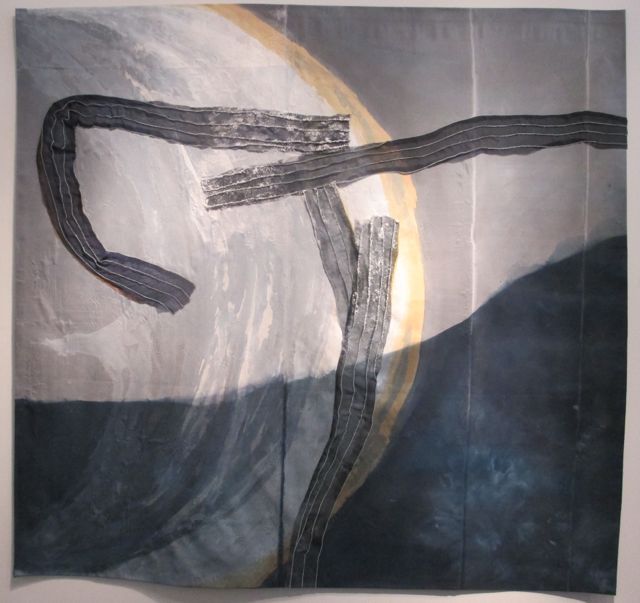
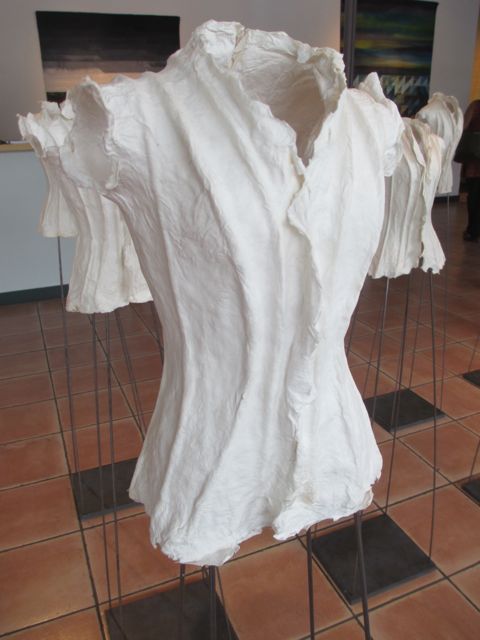
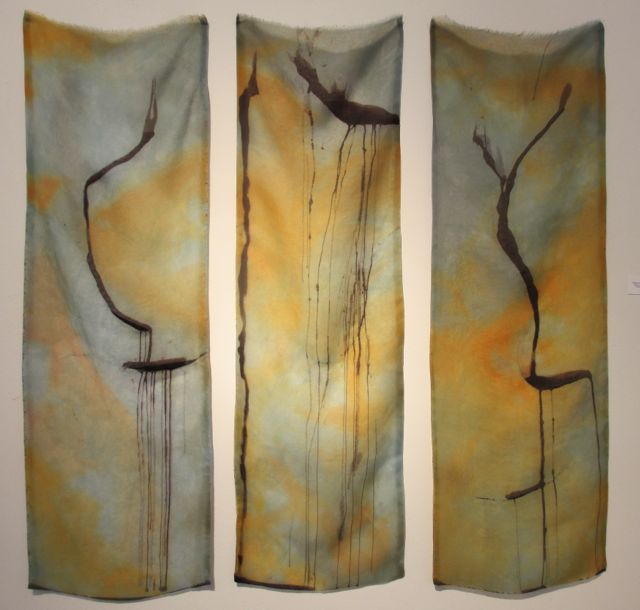

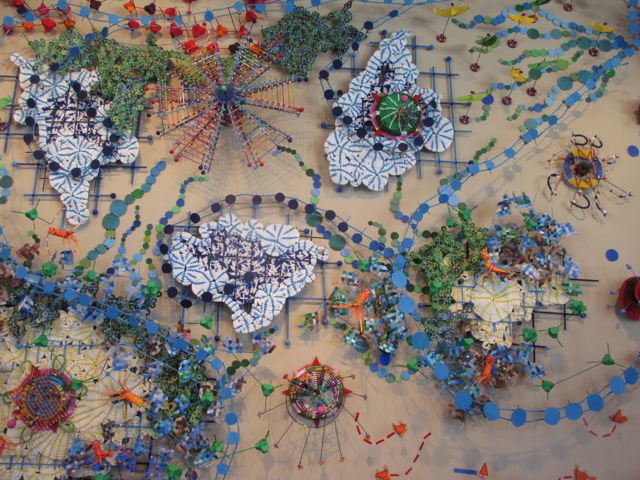


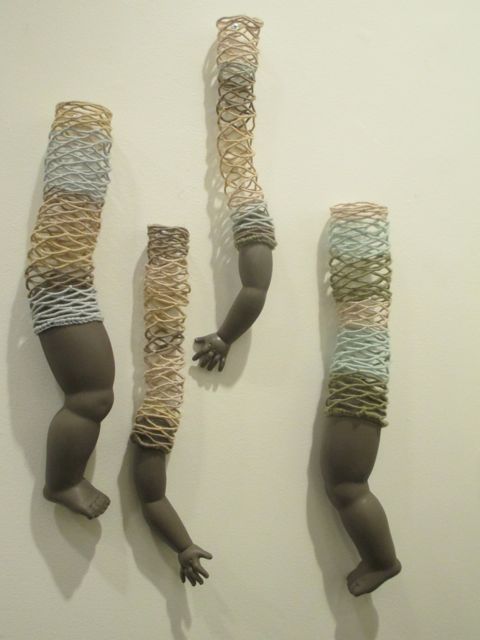
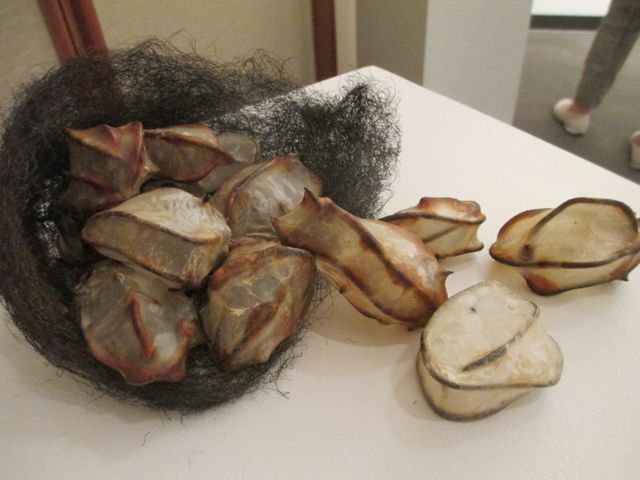
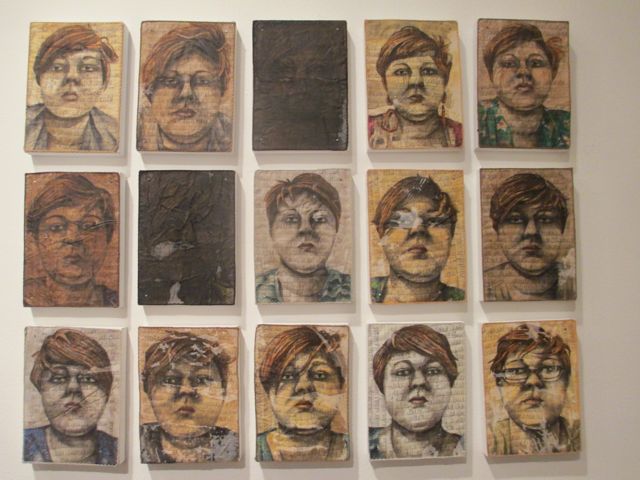

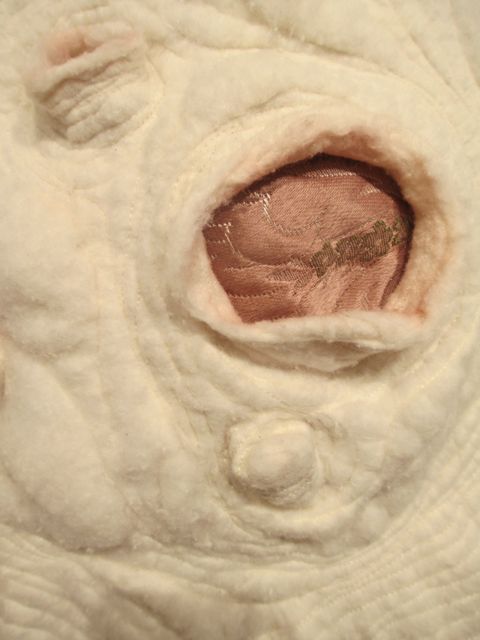
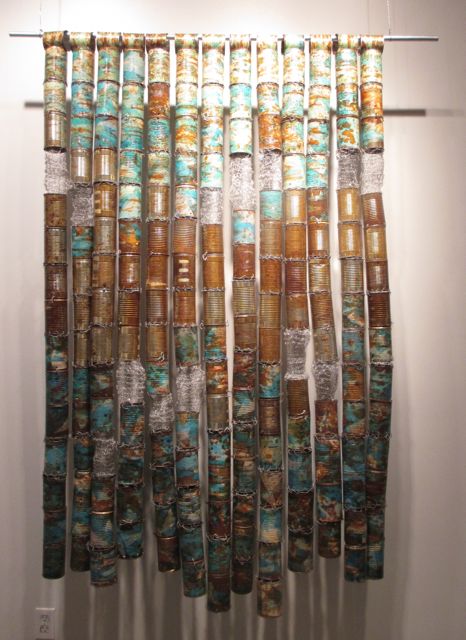



Thanks for posting all of this wonderful work….happy to see it since I couldn’t be there. Is the N. Miebach shot an overhead view? Fantastic!
Hi Christine–Miebach’s work was hard to shoot because it was so big. This photo is from the floor, looking up at the work on the wall. One of the interesting things about her work is that it is so disorienting. I was wishing that it was on the floor and that I could walk through it to experience it.
I am a Textile Artist & Tutor living on the NW Coast of Tasmania. My specialities are Natural Dyeing, Embroidery and designing and creating wearable art. In my work I am bringing the message about recycling and reusing across. My wearable art works are made out of good quality pre worn clothing. By adding on, cutting off, embellishing and stitching I work them into unique one off garments, which are not to way out, so they can be worn on any occasion. With my natural dyeing I use plant matters out of my local area. I find my dye sources in town parks after high winds, on the beach and on friends properties. The cloth I dye usually come from op shops and what people who know me give me. I use wool blanket material and silk. After the material has been dyed, I layer and stitch and embellish it with found objects and turn it into wall pieces or wearable art pieces.